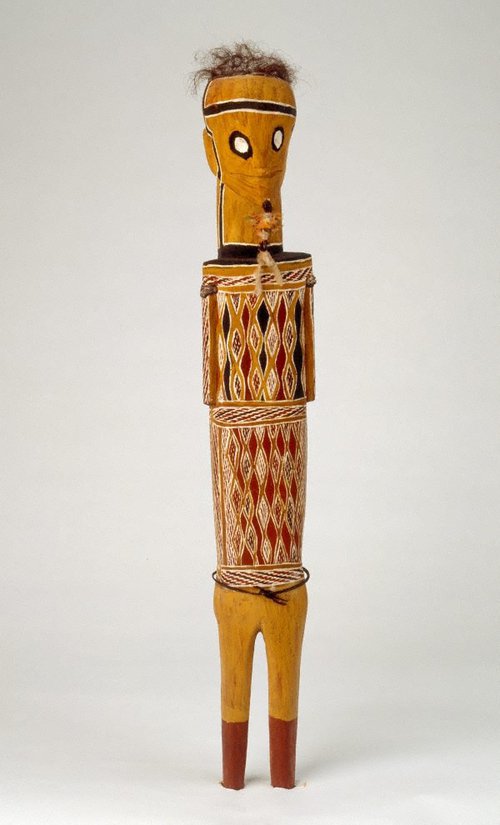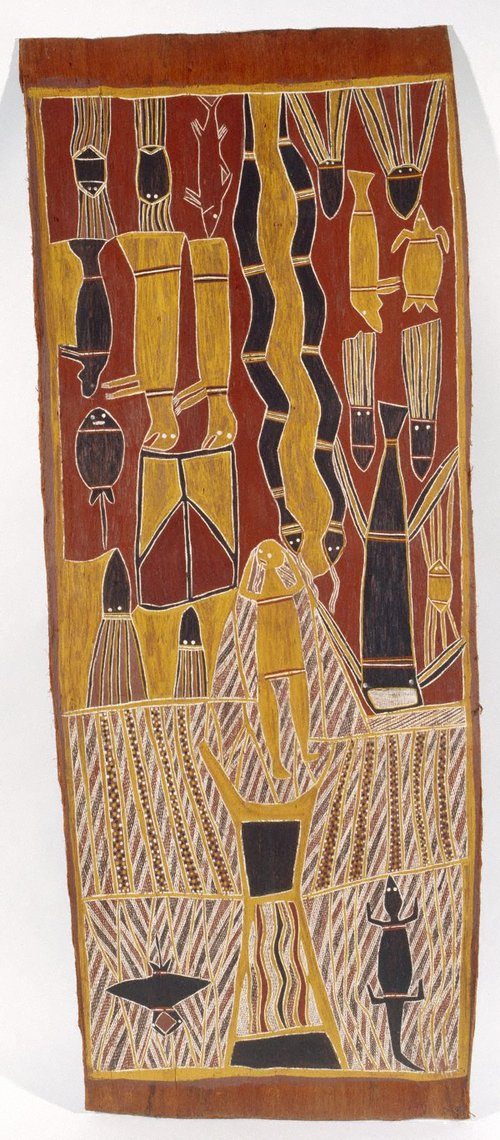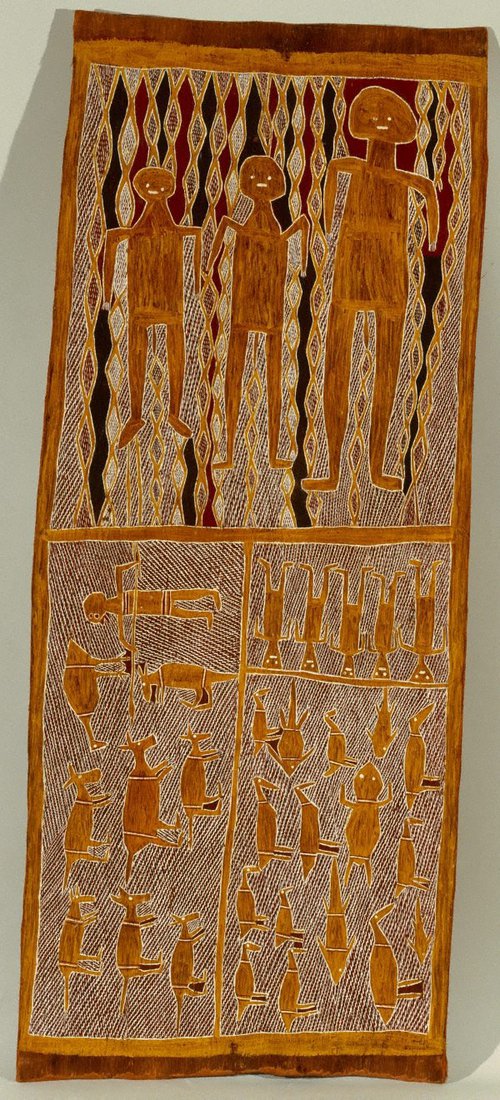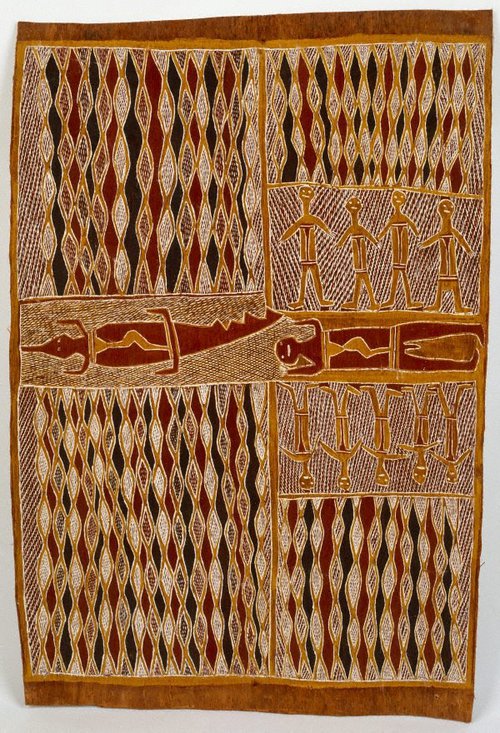Muŋgurrawuy Yunupiŋu
Australia
Born: Yirrkala, North-east Arnhem Land, Northern Territory, Australia circa 1907
Died: 12 Apr 1979
Language group: Gumatj, Arnhem region
Biography
Biranybirany on Caledon Bay is the ancestral country for the three branches of the Gumatj clan, and is home to the major Gumatj totems: Baru (saltwater crocodile) and Gurtha (fire). It is also the homeland of the Yunupingu family. In 1959 – when Munggurawuy Yunupingu painted the Gumatj ancestral fire story on four large barks – he was ceremonial leader, custodian of knowledge and keeper of the law for the Gumatj clan of the Yirritja moiety in north-east Arnhem Land.
Lany’tjung story (Crocodile and Bandicoot), 1959, depicts the story of the ancestral fire that burnt across a huge swathe of eastern Arnhem Land, from Biranybirany to Melville Bay. During a ceremony near Caledon Bay, the fire on the ceremonial ground flared up, out of control, and raged northwards. Above this scene, Munggurawuy includes two images of Baru, making the association with the historical fire that caused the distinct markings on crocodiles’ backs.
The patterns of diamond-shaped miny’tji (sacred clan designs) at the top left of the painting allude to Munggurrawuy’s preoccupation with a missing canoe at the time he made this painting. By including this event with the ancestral story, he shows the relationship between the ancestral past and the present. Below this panel, Munggurawuy has painted a bandicoot running from one hollow log to another, showing that the bushfire has burnt itself out. The diamond shapes in this section represent flames and ashes, a swamp fire, leaves and grass aflame, sandbanks, a creek, footprints and sea-weed, which are all depicted in different configurations of miny’tji.
In The Thunder Spirits (Birimbira), 1961, Munggurawuy shows the Gumatj ancestors as two black serpents shooting bolts of lightning. The ancestor, Yumbulbul, is depicted revelling in the rain from a thundercloud below, with its black centre outlined in yellow and containing wavy lines representing rain. The top section of the painting reveals the different species of marine creatures that emerge after the rain. The miny’tji surrounding the stingray and the crocodile symbolises the sea.
Munggurrawuy assisted Birrikitji Gumana and Narritjin Maymuru in painting the Yirritja church panels now housed in the Buku-Larrnggay Mulka Museum at Yirrkala. He painted Yirritja designs on a bark petition presented to Federal Parliament in 1963, which outlined Yolngu grievances over the intrusion of mining interests in Arnhem Land. Munggurrawuy’s children – particularly Gaymala, Galarrwuy, Mandawuy Barrupu, Gulumbu and Nyapanyapa Yunupingu – have also distinguished themselves as Yolngu leaders in politics and the arts.
Ken Watson in 'Tradition today: Indigenous art in Australia’, Art Gallery of New South Wales, Sydney, 2014








